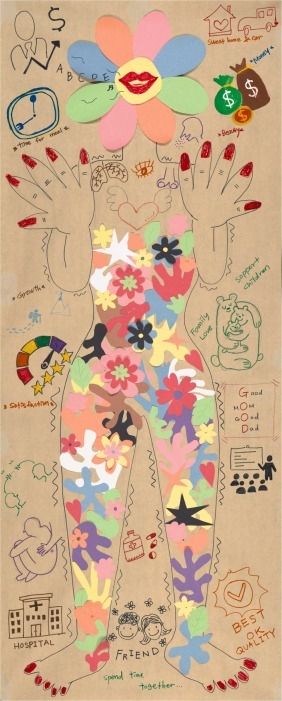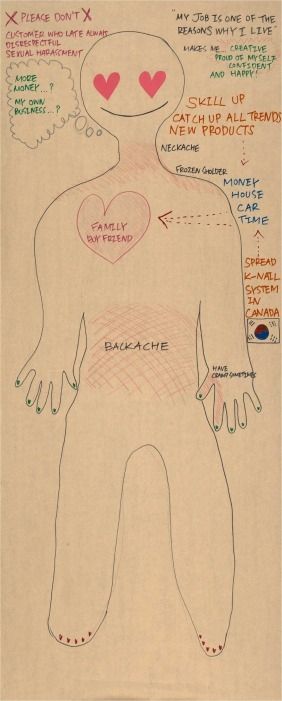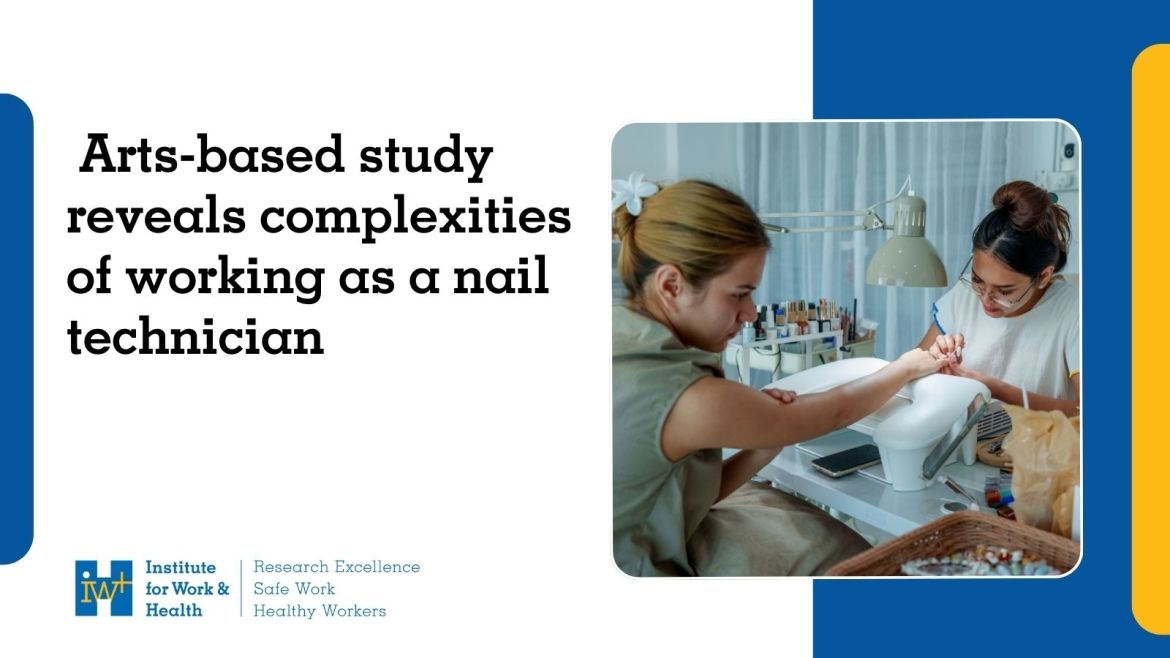Nail technicians’ work involves hazards like exposure to dangerous chemicals that can lead to skin irritation and respiratory inflammation. Their day-to-day work also involves prolonged sitting, repetitive movements, awkward postures, and unpredictable work demands that can leave little time for breaks. This can lead to hand, neck, shoulder and back pain.
These types of hazards have been the focus of many studies on the health and safety of nail salons and their workers. And while this body of research is necessary to create safer nail salons, it can lead to an incomplete picture of nail technicians’ experiences of work, says Dr. Reena Shadaan, who recently completed an Institute for Work & Health Fraser Mustard postdoctoral research award.
That was why Shadaan recently led an arts-based study that strived to demonstrate the complexity of nail technicians’ relationships to their work. Adapting a method called body-map storytelling, the research team asked nail salon workers to visualize their joys, strengths, and hopes, in addition to the hazards and pains associated with their work.
Hazard-focused research can leave the impression that nail salon work is an entirely negative experience for workers, but that single-story narrative can devalue nail salons and the work that nail technicians do, including the skills they bring to this labour,
says Shadaan, whose paper, 'It’s a mixture of emotions
: Nail technicians’ visual storytelling of work and health' was recently published in Qualitative Research in Medicine & Healthcare (doi:10.1016/j.qrmh.2025.100003).
Shadaan, now a staff research scholar in science and technology studies (STS) and sustainability at the University of Toronto, partnered with Parkdale Queen West Community Health Centre (CHC), to conduct the body-mapping study as part of their Nail Salon Workers Project.
The research team recruited 19 nail technicians from the Greater Toronto Area with the help of Peer Outreach and Community Health workers at Parkdale Queen West CHC. Nail technicians were given various art supplies to visualize their experiences of work on a life-sized representation of their body. To do this, they were provided detailed instructions with prompts, such as:
- work-related likes and dislikes,
- how their work makes them feel,
- how their work lives affect their home lives,
- where they turn for support, and
- their hopes and goals for the future.
The nail salon workers took the materials home to complete the map and were told to take as much or as little time as needed to fully represent themselves. After the nail technicians made their body maps, the research team interviewed each participant to discuss the imagery they used in their body maps, which includes various colours, images, symbols and words.
Nail technicians are artists,
says Shadaan. Giving them time to reflect on their experiences and the opportunity to use their artistic skills allowed for an additional level of depth that you may not necessarily be able to capture in an interview alone.
What she found was that workers do experience harms associated with their work; however, there are also considerable joys.


Many noted that nail-care work is low-paying and unstable, since nail workers typically work on commission and any base pay that’s offered is often below minimum wage. They also talked about aches and pains in their hands, back, neck, and shoulders, as well as skin or respiratory irritation from the chemicals they work with.
But many also added images and text on their body-maps that express the satisfaction they get from their creative and customer-centered work. This includes the emotional rewards they experienced from chatting with customers about their lives and making customers “feel beautiful.” However, many also put up with dissatisfied customers who unfairly demand refunds and do-overs or subject workers to verbal or sexual abuse. In these situations, the nail salon workers had to suppress their own emotions as a way to navigate difficult interactions.
Further, both the positive and negative aspects of the work trickled into their personal lives outside of the salon. Some noted the benefits of their flexible hours, allowing them to work around caregiving responsibilities or taking long visits to their home countries during slow seasons. Others have the opposite experience, where holding multiple jobs or running a busy salon can take time away from family.
This study shows a more comprehensive picture about what is means to be a nail technician,
says Shadaan. This kind of portrayal can help to give the public a better understanding of who nail technicians are, what they experience, and the skills they bring to this profession. As such, the body maps can be used an awareness-building tool to advocate for better conditions for these workers.
In addition to helping to conceptualize the study, recruit participants and more, Parkdale Queen West CHC also organized a public exhibition called “Flavours of Life” in the spring of 2024 to showcase the finished body-maps and other arts-based projects.
Parkdale Queen West CHC’s Nail Salon Workers’ Project is at the core of mobilizing the work around health and safety in nails salons, in Ontario and in Canada broadly,
says Shadaan, who also emphasizes the importance of conducting community-based research. As a community-based project, this study benefited from the fact that Parkdale was involved every step of the way, to make sure the research reflected the organization’s research and advocacy priorities.
